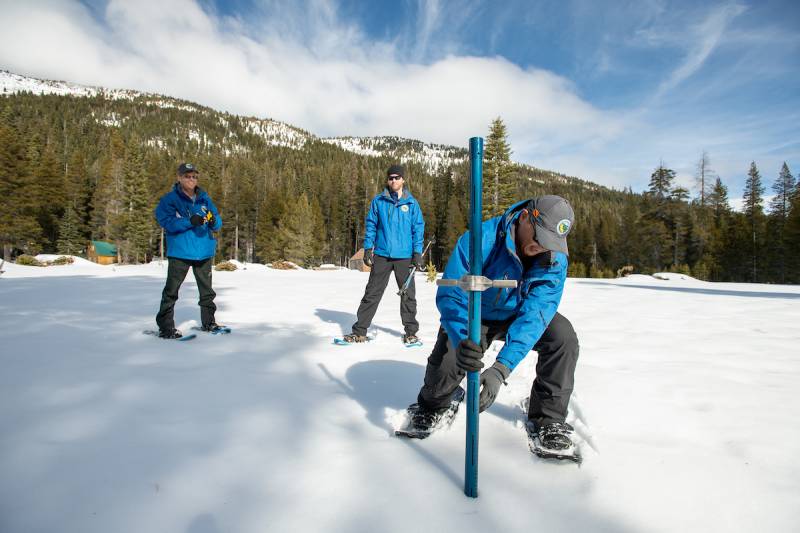About 23.3% of the state is now in “moderate drought,” up from 9.5% last week. That’s according to the U.S. Drought Monitor, a weekly report issued by the National Oceanic and Atmospheric Administration, the U.S. Department of Agriculture and the University of Nebraska-Lincoln.
DWR spokesman Chris Orrock says the dry winter is in stark contrast to last year.
“In February of 2019, it was probably one of the wettest Februarys we’ve ever had. Some areas of the Sierra accumulated up to 50 feet of snow,” Orrock said. “This year in the majority of the Central Valley and Northern California we had little to no measurable precipitation.”
But thanks in part to a snowy and cold 2019 in California’s mountains, Orrock says the state’s reservoirs still have plenty of water.
“They’re all at or near those averages that they would be at this time of year anyhow because of that good snowpack we had last year,” Orrock said.
California typically receives about half of its annual precipitation in the months of December, January and February.
Snowpack is an important insurance policy to protect against wildfire, says John Abatzoglou, a climatologist at University of California, Merced.
Snow melt provides a sustained, gradual source of moisture and keeps those forested areas wet later into the spring and early summer.
A subpar snowpack year sets the stage for an early start to fire season, Abatzoglou says.
“California certainly has seen longer fire seasons, lasting both later in the fall and starting early in the spring,” he said. “And unfortunately, the lack of precipitation across the state — we’ve basically struck out during the two wettest months of the year.”
Cal Fire, the state agency responsible for fire prevention in California, says that the current dry and windy conditions have already contributed to wildfires, which is usual for wintertime.
Orrock says water officials are now hoping for a repeat of the 2018 wet season, when a series of March storms replenished the snowpack in time for the spring runoff.
